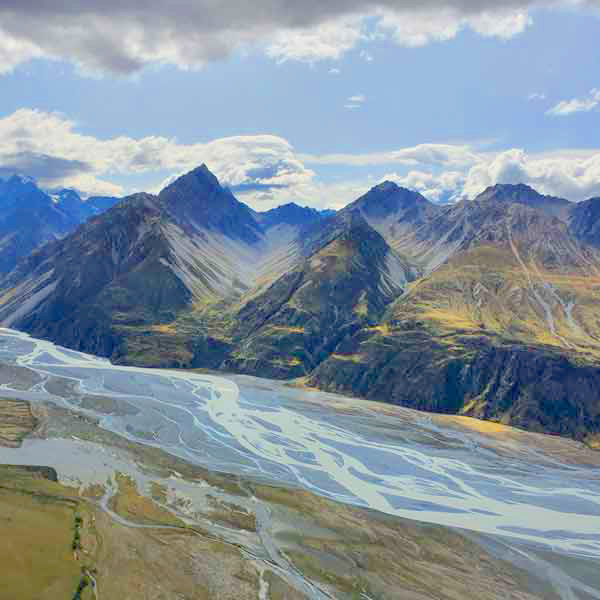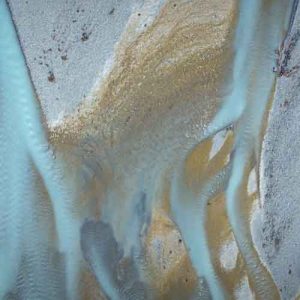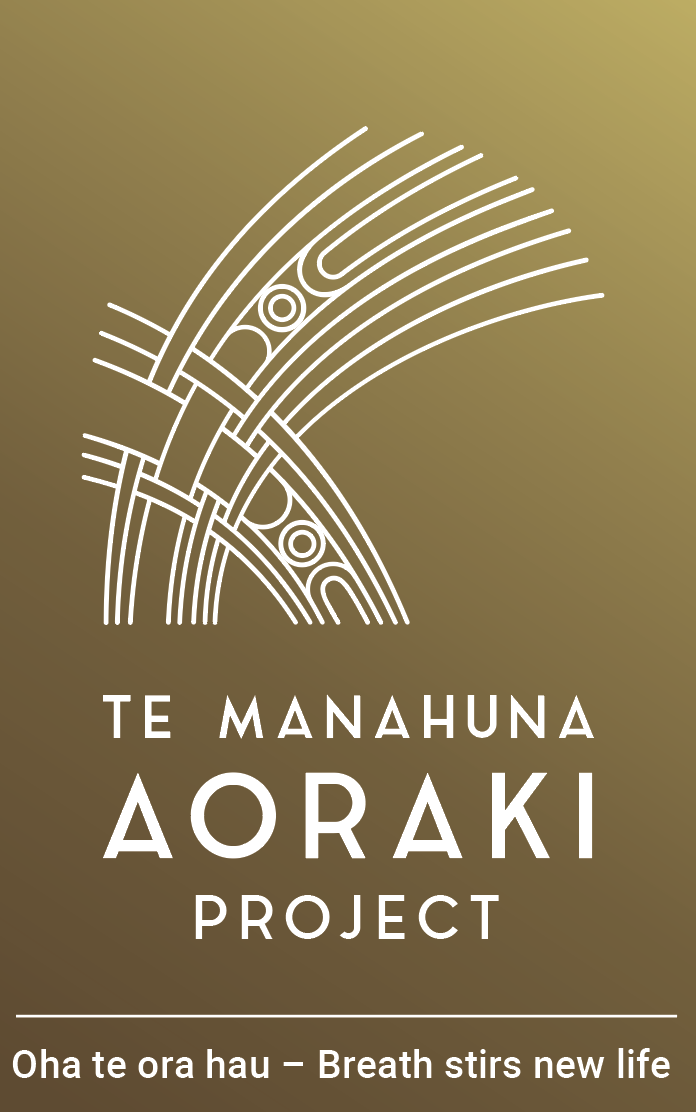Why here?
Te Manahuna is an ancient landform frozen in time. Rare ecosystems connect the highest mountains to the valley floor, forming the largest intermontane basin in New Zealand. It is renowned throughout the world for the finest examples of moraine kettleholes, and pristine braided rivers.
Alpine environment
The project area includes New Zealand’s highest mountains. Aoraki Mount Cook and KaTiritiri-o-Te-Moana / the Southern Alps are mountains that touch the stars.
The area’s huge peaks, glaciers and permanent snow fields were shaped by tectonic uplift along the Alpine Fault. The mountains are lashed by strong winds, and see extreme changes in temperature.
There is a shortened breeding season for animals, and a restricted growing season for plants, so only the tough survive. Tuke/rock wren, scree wētā, and kea live among the scree and scrub. Unique plants like the scree pea and the world’s largest buttercup, the Mount Cook buttercup, have developed ways to live in the harsh alpine environment.
Introduced predators – like hares, feral cats and stoats – roam the mountains, snacking on plants and killing native birds and insects.

Once the project has eliminated these predators from alpine areas, the mountains and glaciers will provide natural barriers to reinvasion.
To the west rises Te Tari-o-Mauka-Atua / the Ben Ohau Range, linked to the main divide and New Zealand’s highest mountains in Kirikirikatata / the Mount Cook Range. To the east lies Maukakukuta/the Two Thumb Range.
Braided rivers
Te Manahuna is home to some of the country’s most pristine and intact braided rivers. These river systems occur only in New Zealand, Alaska, Canada and the Himalayas.
Flowing from the mountains, they carry deposits of gravel and other material down valleys to form winding channels between the mountains and the coastal plains. These channels are dynamic, and shaped by changing water flows and the sediments they carry.
The dynamic braided river environments of the Tasman, Cass, Godley and Macaulay rivers provide foraging and nesting habitats for the world’s rarest wading bird, the kakī / black stilt, as well as tarāpuka / black-billed gulls and tūturiwhatu / banded dotterels. The stable river terraces are home to insects like the robust grasshopper and native plants.
Many species have adapted to the dynamic environment and threats, producing multiple clutches of eggs to cope with flooding, and camouflage to counter predation from the air.
These braided river habitats and surrounding wetlands are under threat. Hedgehogs, stoats and feral cats swarm across the landscape, robbing birds’ nests and killing lizards and invertebrates.

Weeds can flourish in the disturbed riverbed channels, slowly smothering native plants and shading basking habitat for lizards and grasshoppers.
By removing the weeds and pests, Te Manahuna Aoraki Project will give these unique species a chance to thrive again.
Dryland tussock
The grasslands are one of New Zealand’s most desert-like environments, with winter temperatures as low as -20°C and scorching hot summers that can reach over 30°C.
The Mackenzie Basin is the largest inter-montane basin in New Zealand, covered in grasses and tussocks, and surrounded by snow-capped mountains. The many glacial lakes, tarns and kettleholes define the character of the whole area.
The extreme temperatures and stony, infertile soil influence the unique range of plants that have developed. At first glance they may be hard to spot, but these naturally rare moraine, kettlehole and inland dune ecosystems harbour diverse communities of native plants.
This ecosystem is home to at least 80 threatened and at risk native plants, including several species that are found nowhere else.
The tussock grasslands are also home to populations of the rare Tekapo ground wētā and the Mackenzie skink, as well as butterflies, fish and native moths.
But rabbits are chewing through native vegetation in the front country. Predators like hedgehogs, stoats and feral cats attack native birds and their chicks, and invasive weeds are competing with natives.
Photo credits: Simone Smits, Liz Brown, Robyn Janes
